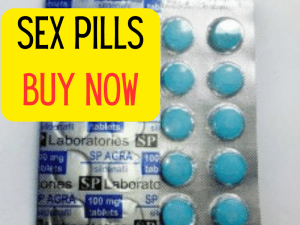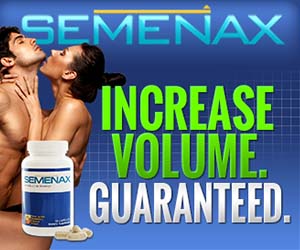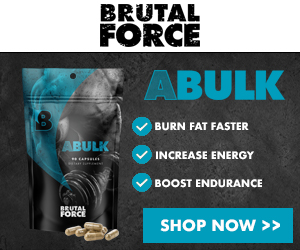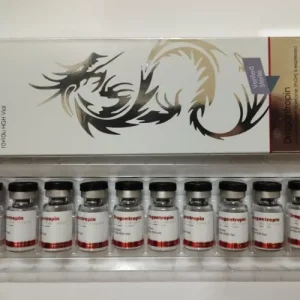Steroids
VOX Testing: Why Bodybuilders Must Have It Tested Regularly
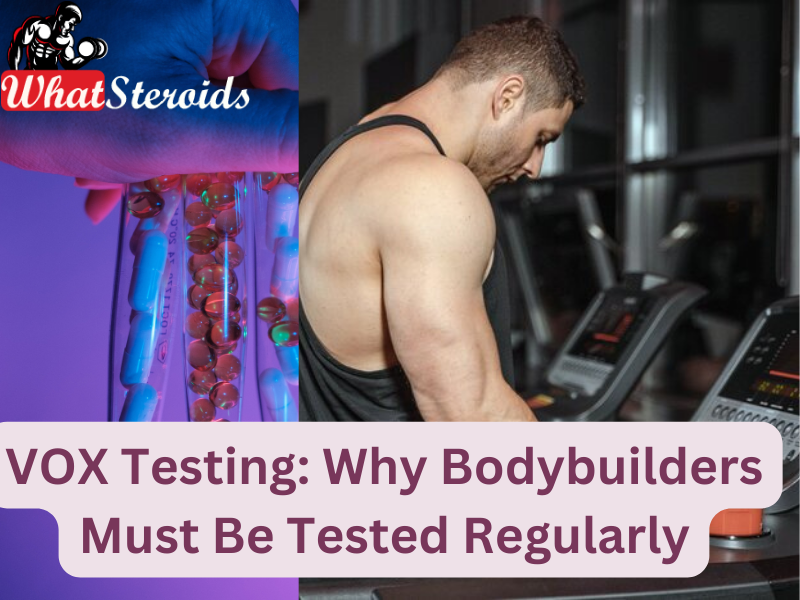
VOX testing is commonly used in bodybuilding circles and refers to the volume of exercises performed. VOX testing measures the intensity of a workout and can indicate how hard an individual is working.
The higher the VOX, the more intense the workout. For example, if one performs 10 sets of 10 repetitions with heavy weights, their VOX would be high. On the other hand, if one performs 20 sets of 5 repetitions with light weights, then their VOX would be low. In either case, understanding what VOX means in bodybuilding can help you determine how hard you should push yourself to achieve your goals.
Why VOX Testing for Bodybuilders
VOX max testing is essential for anyone looking to improve their physical fitness and performance, regardless of their fitness goals. This type of testing measures the maximum amount of oxygen that your body can consume during exercise, which is a key indicator of your overall aerobic fitness. With a VOX max test, you can identify areas for improvement and set realistic goals for yourself.
By understanding your current level of aerobic fitness, you can make informed decisions about the types of exercise you should include in your routine and how hard you should push yourself during each workout.VOX max testing is typically offered in a doctor's office or at a health club. One of the most common ways to test your aerobic fitness is using an exercise bike at a high resistance level. What does VOX max testing measure?
Oxygen Uptake Rate Basics
The oxygen uptake ratio measures how efficiently your body uses oxygen during exercise. The higher this ratio, the more efficient you are at taking in and using oxygen during exercise. To understand how this measurement works, it's helpful to know about these three components of the body:
Core temperature
This is typically measured via an infrared thermometer placed on the forehead.
Heart rate:
This is typically measured by your pulse, usually taken at the carotid artery near the front of your neck.
Oxygen levels in your blood
This is often measured with a fingertip-reading sensor attached to a scale or a pressure sensor placed on the fingertips and then connected to an oxygen monitor. When you exercise, your body heats up, which increases its core temperature.
The heart increases how quickly it pumps blood through the body and releases oxygenated blood into the air (this process creates carbon dioxide). This causes your heart rate to grow as well. The blood vessels in the body get bigger, increasing the blood flow to the heart and brain.
In a panic attack, your heart rate can increase by as much as 600 beats per minute. This means a lot of pressure on your body, which can cause dizziness, lightheadedness, and sweating.
Related Article: Dwayne the Rock Johnson Vs. John Cena – Workout Motivation
VOX Testing & Methods
VOX testing is a simple blood test that analyzes the body for fat, muscle, and bone minerals. The test gives doctors valuable insights into how your body reacts to diet and exercise. It can also help you monitor your progress and follow an effective program to reach your fitness goals. Vox testing is a way for health professionals to measure bone mineral levels in the body, which may be low if not enough calcium is consumed.
What More Can VOX Testing Do?
In addition, VOX Testing can provide insight into whether someone needs more calcium in their diet or is at risk of developing osteoporosis later in life. In the United States, more than 50% of adults aged 18-50 have a low bone mineral density (BMD), defined as a bone mineral content (BMC) at or below normal limits.
Women are more likely to experience this symptom than men, as they tend to experience natural osteoporosis later in life. This process can be accelerated due to smoking, excessive alcohol consumption, and poor nutrition.
As stated earlier, VOX max is an important cardiovascular fitness and aerobic capacity measure. It is the maximum amount of oxygen your body can use during exercise. There are several ways to test your VOX max, such as running on a treadmill, using a stationary bike, or taking a step test.
Each method has advantages and disadvantages, so it’s important to understand the different tests available and how they work. In this article, we’ll explore the main ways of testing your VOX max so you can decide which one is right for you.
Manual TestingManual
It is the most popular option and consists of a physician or trained professional using a spirometer to measure a person’s lung capacity. With this method, they can get an accurate reading. The downside of manual testing is that it can be expensive, time-intensive, and inconvenient for most people.
Several false readings can occur when you use manual testing techniques for certain conditions, such as asthma or cystic fibrosis. Pulse TestingThe pulse test uses the person’s pulse rate to calculate their VOX max ( maximum oxygen in the blood). The person’s pulse is continuously measured to create an average.
Remember that this estimate is not always accurate and should be used only as a guide. Several false readings can occur when you use manual testing techniques for certain conditions, such as asthma or cystic fibrosis.
Must Read: All Bodybuilding Categories Explained
Pulse Testing
The pulse test uses the person’s pulse rate to calculate their VOX max (maximum oxygen in the blood). The person’s pulse is continuously measured to create an average. Remember that the conversion between blood volume and VOX max can vary based on age, sex, weight, height, and other factors.
The pulse test uses the person’s pulse rate to calculate their VOX max (maximum oxygen in the blood). The person’s pulse is continuously measured to create an average.
Remember that the conversion between blood volume and VOX max can vary based on age, sex, weight, height, and other factors. Maximal Heart Rate (MHR): Maximal heart rate is calculated by subtracting your age from 220. Mean Arterial Blood Pressure (MAP)The mean arterial blood pressure is determined through auscultatory measurement of the radial artery on the wrist. The standard deviation for this measurement is set at 3 mm Hg.
Dangers of Low VOX
Low vox is a popular dieting approach among bodybuilders, but it can come with several risks if not done correctly. In this article, we will explore the dangers of low vox for bodybuilders and how to minimize them.
We will examine the potential health risks associated with low Vox diets and how to use them safely and effectively. Finally, we will discuss the importance of proper nutrition. That includes supplementation for bodybuilders on low-vox diets. Health Risks of Low Vox Bodybuilding DietsLow vox diets are popular for bodybuilders, but they come with several health risks that should be considered. One risk is the potential for malnutrition and even starvation.
A low Vox diet can cause nutritional deficiencies, leading to severe and potentially life-threatening consequences. If you’re following a low Vox diet, taking nutritional supplements frequently, including vitamins and minerals, is essential. It would be best to speak with your doctor before starting a low-vowel diet because there may be health complications involved with following this eating style.
VOXfit: The Most Trusted VOX App for Bodybuilders
VOXfit app is a revolutionary technology gaining traction in athletics and bodybuilding. It is an artificial intelligence-based tool that helps athletes and bodybuilders optimize their performance by providing personalized insights on their training, nutrition, and recovery.
The use of VOX in athletics and bodybuilding has been proven effective in enhancing an athlete’s performance. VOXfit provides real-time feedback on the athlete’s progress. It also helps them make better training, nutrition, and recovery decisions. Its AI-driven analytics can help athletes achieve their goals faster by providing personalized insights tailored to each individual’s needs.VOX testing is also known for its personalization and customized metrics, which provide a more accurate assessment of the athlete’s performance. The VOX app is available on iOS and Android devices. It has been downloaded over 200,000 times on Google Play Store, and its iOS App Store download count is over 100,000. Voxfit was founded by Adam Coomer in 2015 in Boston, Massachusetts. The technology was originally called "The Athletic Performance Monitor," or APM.
The company later changed the name to VOXfit to better reflect the focus on personalized fitness insights they offer. The company's first product, the VOXfit monitor, is a heart rate monitor with a mobile app. The product was originally released on Kickstarter in 2016. It quickly became the crowdfunding platform's most funded health and fitness project. In May 2018, VOXfit announced that it had raised $22 million in Series B Funding led by Maven Ventures. In 2016 VoxFit introduced its first wireless wearable device called the Fitbit-like VOXheartrate+ Monitor, which can store data from multiple users simultaneously.
Heart Rate Monitoring
VoxFit’s second product release was Heart Rate Variability monitoring. Voxfit's third product release was VOXfit Core which offers users a customized workout program.VOXfit Core is a fitness app that helps users find workouts tailored to their needs.
The app also provides audio guidance for each exercise.VOXfit is selling VOXfit Core as an annual subscription, which gives users unlimited access to the app’s daily workouts and customized training plans for life. In 2017, VoxFit released the VOXheartrate+ Monitor in Canada and The United States. In June 2018, VoxFit released its fourth product: the VOXheartrate+ Monitor V4.VOXfit was founded in 2014 by Alain Delorme, a former professional triathlete from Montreal.
The company's first product release was the VOXheartrate+ Monitor in 2015. VOXfit later released an app for users to design their workouts called VOXworkouts in 2016 and the VOXXtreme workout series in 2017. In 2017, VoxFit released the VOXheartrate+ Monitor V4. It allows users to monitor their heart rate throughout a workout using multiple sensors simultaneously, leading to over 100% growth.
Overall
Finding reliable VOX services can be a daunting task. With so many options available, it can be difficult to determine which ones are the best for your needs.
Fortunately, you can do a few things to ensure you get reliable VOX testing services. It includes researching online reviews and testimonials from past customers. Check any service providers' credentials, and ask questions before committing. These steps allow you to find reliable VOX testing services that meet your needs and provide quality results.
More Reading: A New Caffeine? What You Need to Know about Teacrine
Steroids
Decoding IGF-1 LR3: A Guide to its Benefits
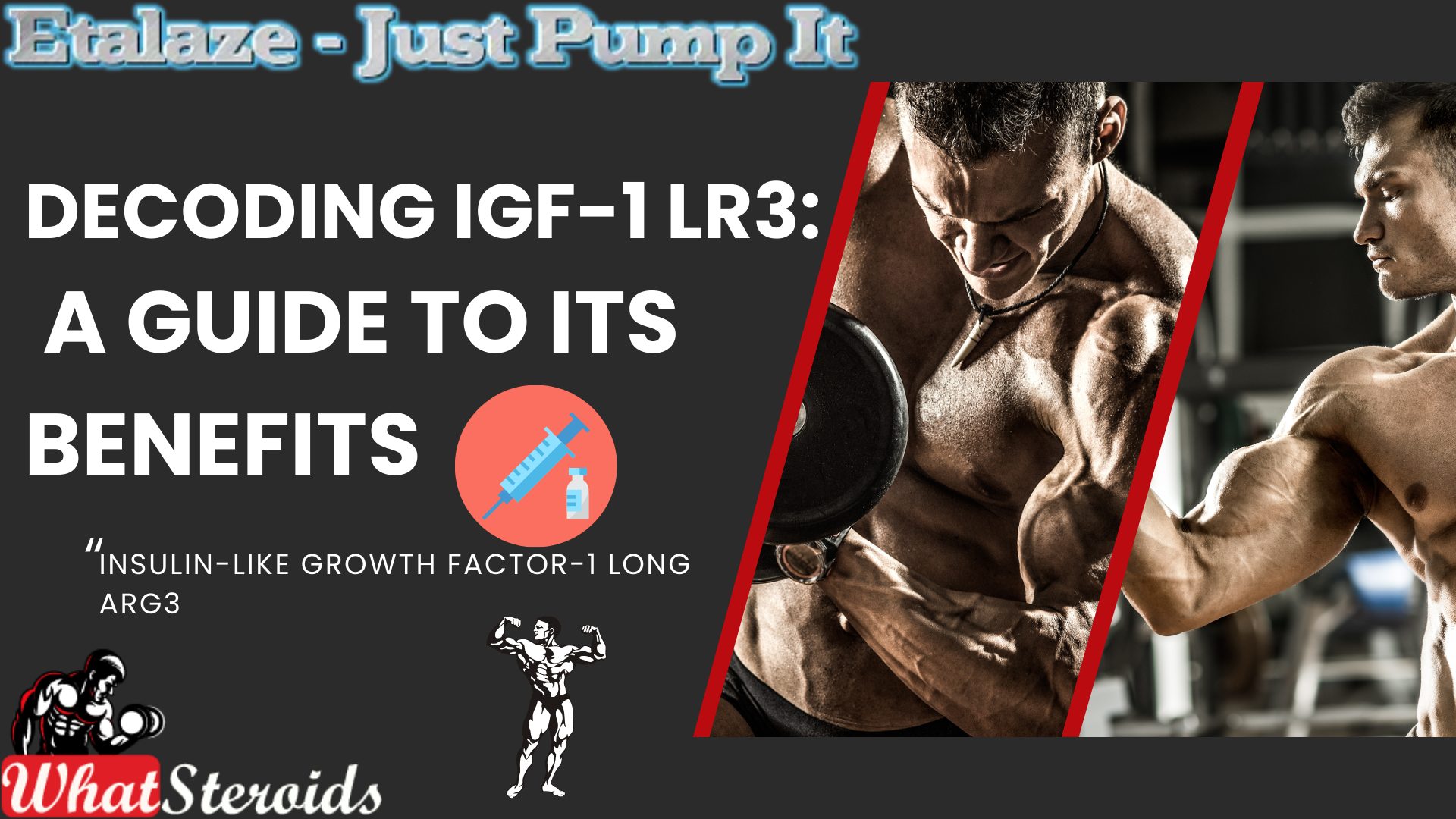
IGF-1 LR3 (Insulin-like Growth Factor-1 Long Arg3) is a synthetic variant of IGF-1, a hormone produced by the liver in response to growth hormone (GH). Unlike GH, which works indirectly, IGF-1 directly facilitates the growth and repair of muscle cells.
Related Article: Ostarine for Beginners; The Ultimate Guide
This modified version of IGF-1 is engineered to avoid binding with IGF-binding proteins, extending its half-life to 20–30 hours. As a result, it remains active in the body significantly longer than natural IGF-1.
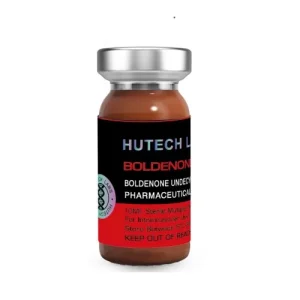 Click here to BuyBoldenone 300 by Hutech
Click here to BuyBoldenone 300 by Hutech
Many performance athletes incorporate IGF-1 LR3 post-workout to enhance muscle growth, speed up recovery, and support fat loss. When injected into specific muscle groups, it often produces localized effects. Additionally, it helps with nutrient distribution and, in some cases, improves insulin sensitivity.
On the other hand, human growth hormone (HGH) operates more broadly and indirectly, stimulating the liver to produce IGF-1 and offering more systemic benefits such as improved skin health, joint support, and fat reduction, albeit at a slower pace.
Typical IGF-1 LR3 doses range from 20–50 mcg daily, administered subcutaneously or intramuscularly, often following a workout.
Key Features of IGF-1 LR3
Enhanced Bioavailability: It avoids binding with IGF-binding proteins, increasing its potency.
Muscle Growth & Repair: Directly stimulates muscle cell proliferation and differentiation.
Improved Nutrient Distribution: Helps shuttle nutrients into muscle cells, supporting recovery.
Potential Fat Loss Benefits: Some users report improved insulin sensitivity and fat metabolism.
Mechanism of Action
IGF-1 LR3 interacts with IGF-1 receptors on muscle cells, activating pathways like PI3K-AKT and MAPK, which are crucial for cell growth and regeneration. This makes it a powerful tool for bodybuilders and athletes looking to optimize recovery and muscle development.
What Are the Top 10 Alternatives to IGF-1 LR3?
Here are some of the top alternatives to IGF-1 LR3, each with unique benefits for muscle growth, recovery, and performance:
BPC-157 – Known for its regenerative properties, it enhances healing and tissue repair.
CJC-1295 – A growth hormone-releasing peptide that boosts GH levels for muscle development.
Ipamorelin – Stimulates GH release with minimal side effects, making it a safer option.
MK-677 (Ibutamoren) – A potent GH secretagogue that promotes muscle growth and fat loss.
Sermorelin – Encourages natural GH production, supporting recovery and lean muscle gains.
Tesamorelin – Primarily used for fat loss, but also aids in muscle preservation.
Follistatin-344 – Inhibits myostatin, allowing for increased muscle hypertrophy.
PEG-MGF (Pegylated Mechano Growth Factor) – Enhances muscle repair and growth post-exercise.
GHRP-6 – Stimulates appetite and GH release, supporting muscle mass gains.
GHRP-2 – Similar to GHRP-6 but with fewer hunger-related side effects.
Each of these peptides has distinct mechanisms and benefits.
Must Read: Are Nootropics a Better Option to AAS?
Potential Risks Associated With IGF-1 LR3
IGF-1 LR3 comes with several potential risks, especially for bodybuilders using it to enhance muscle growth. Here are some key concerns:
Hypoglycemia (Low Blood Sugar) – IGF-1 LR3 increases glucose uptake in muscle cells, which can lead to dangerously low blood sugar levels if not managed properly.
Organ Growth – Since IGF-1 affects all tissues, excessive use may lead to unwanted growth in organs, increasing health risks.
Cancer Risk – IGF-1 plays a role in cell proliferation, and elevated levels have been linked to an increased risk of certain cancers.
Water Retention & Edema – Some users experience bloating and fluid retention, which can affect performance and aesthetics.
Joint Pain & Stiffness – Excessive IGF-1 levels may contribute to joint discomfort due to increased tissue growth.
Cardiovascular Issues – There is some concern that IGF-1 LR3 could contribute to heart enlargement or other cardiovascular complications.
Desensitization – Long-term use may reduce the body's natural IGF-1 production, leading to dependency
Overall
IGF-1 LR3's ability to bypass IGF-binding proteins makes it more potent but also increases the likelihood of desensitization with prolonged use. For those considering it, careful dosing and monitoring are crucial to mitigate side effects.
Steroids
AOD-9604: The Fat-Burning Peptide Explained
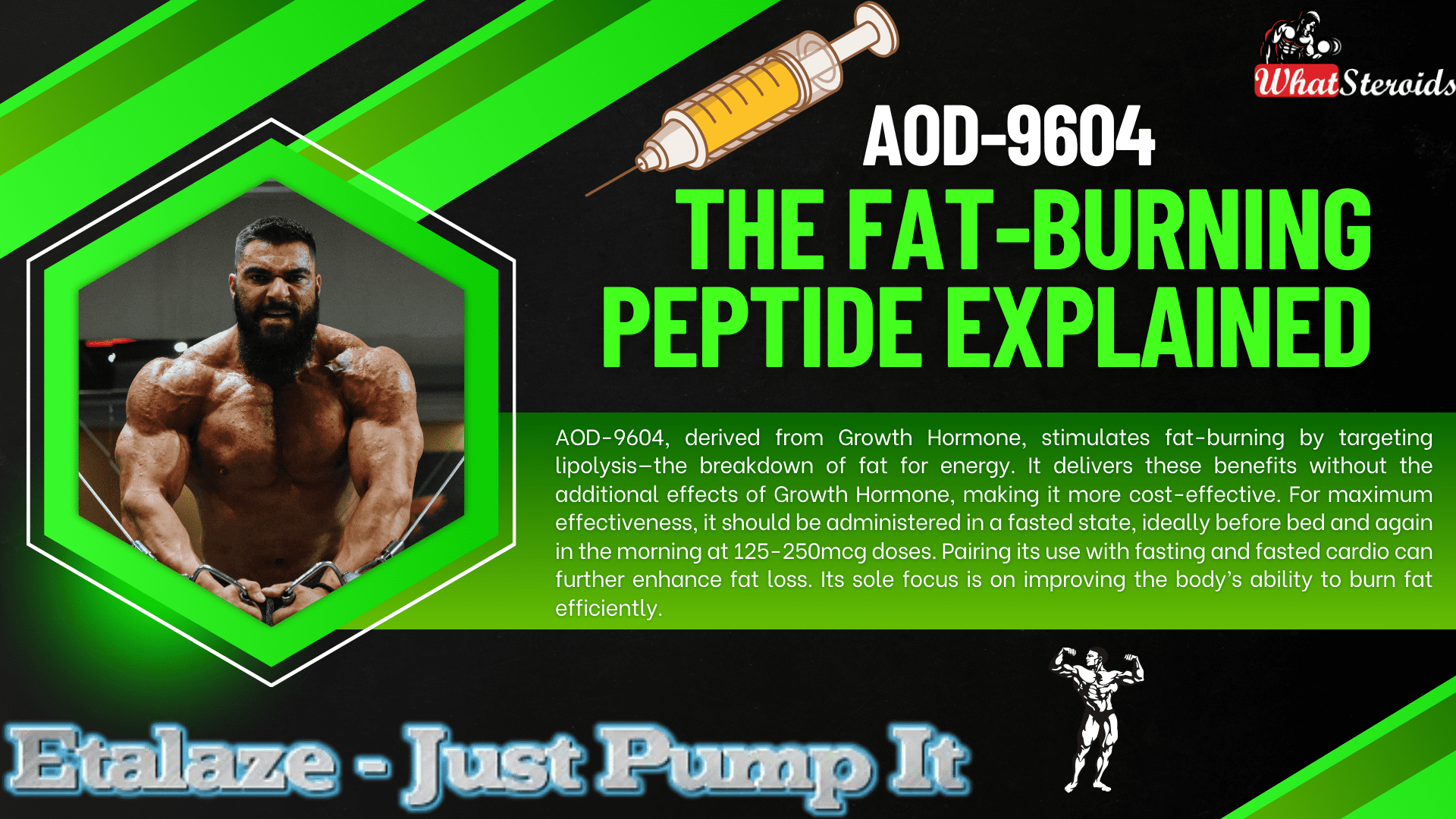
AOD-9604, along with the similar HGH Frag 176-191, is a peptide derived from Growth Hormone that includes only the amino acids in HGH responsible for stimulating fat breakdown, known as lipolysis.
This means that these peptides offer the fat-burning benefits of HGH without its other effects—whether beneficial or adverse—and come at a lower cost.
Related Article: Anavar Cycle for Men and Women
Lipolysis refers to the process where fat cells are broken down to be utilized as energy. AOD-9604 promotes accelerated fat loss by increasing the body's use of fat as fuel.
For optimal results, the peptides should be used in a fasted state. AOD-9604 and Frag 176-191 are most effective when administered at a dose of 125-250mcg before bedtime (at least 3-4 hours after eating) and in the morning at the same dose, followed by a fasting period of 3-4 hours, ideally combined with fasted cardio.
Check Out Dragontropin HGH 100 IU by Dragon Pharma
Similar Peptides with Fat-Burning Effect
Here’s a list of 10 peptides similar to AOD-9604, each with a brief description:
Ipamorelin: A growth hormone-releasing peptide (GHRP) that stimulates the natural release of growth hormone, promoting fat loss, muscle growth, and improved recovery without affecting other hormones like cortisol or prolactin.
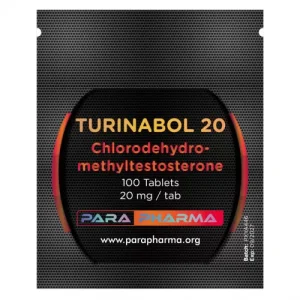 Click Here to Buy: Turinabol 20 by Para Pharma
Click Here to Buy: Turinabol 20 by Para Pharma
CJC-1295: A peptide that increases growth hormone and IGF-1 levels, aiding in fat loss, muscle gain, and improved sleep quality. It has a long half-life, making it convenient for users.
HGH Frag 176-191: A fragment of human growth hormone specifically designed for fat-burning. It targets adipose tissue without the broader effects of full-length HGH.
Tesamorelin: Known for reducing visceral fat, this peptide stimulates the release of growth hormone and is often used for weight management and metabolic health.
BPC-157: While primarily known for healing and recovery, BPC-157 can support fat loss indirectly by improving gut health and reducing inflammation.
Melanotan II: Originally developed for skin tanning, it also has appetite-suppressing properties, making it useful for weight management.
Thymosin Beta-4 (TB-500): Focused on healing and recovery, it can enhance physical performance and indirectly support fat loss through improved activity levels.
GHRP-6: A growth hormone-releasing peptide that boosts appetite and metabolism, aiding in muscle growth and fat loss.
Semaglutide: A GLP-1 receptor agonist that regulates appetite and blood sugar levels, making it effective for weight loss and metabolic health.
MK-677 (Ibutamoren): A growth hormone secretagogue that increases growth hormone and IGF-1 levels, promoting fat loss, muscle gain, and improved recovery.
List of Peptides With a Counteractive Effect Bodybuilders Must Avoid
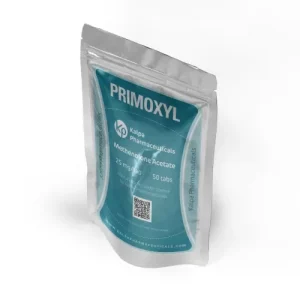 Click Here to Buy Primoxyl 25 by Kalpa Pharmaceuticals
Click Here to Buy Primoxyl 25 by Kalpa Pharmaceuticals
Some peptides can inadvertently lead to fat gain due to their effects on metabolism and appetite regulation. Here are a few that bodybuilders might want to avoid or use cautiously:
- GHRP-6 – While it stimulates growth hormone release, it also significantly increases appetite, which can lead to excess calorie consumption and fat gain.
- IGF-1 LR3 – This peptide enhances muscle growth but can also promote fat storage if not carefully managed with diet and training.
- MK-677 (Ibutamoren) – Though technically a growth hormone secretagogue rather than a peptide, it boosts GH levels but often leads to increased hunger and potential fat accumulation.
- CJC-1295 with DAC – While effective for muscle growth, its prolonged GH release can sometimes lead to unwanted fat retention if not paired with a strict diet
Overall
AOD-9604, derived from Growth Hormone, stimulates fat-burning by targeting lipolysis—the breakdown of fat for energy. It delivers these benefits without the additional effects of Growth Hormone, making it more cost-effective. For maximum effectiveness, it should be administered in a fasted state, ideally before bed and again in the morning at 125-250mcg doses. Pairing its use with fasting and fasted cardio can further enhance fat loss. Its sole focus is on improving the body’s ability to burn fat efficiently.
Read More: How Much Do You Know About B-AET? A Fat Burner You’ve Been Missing
Bodybuilding
Understanding Trenbolone-Induced Cough (“Tren Cough”)

Trenbolone, a potent anabolic steroid, can sometimes cause “tren cough”—a sudden and intense coughing episode shortly after injection. Although not exclusive to Trenbolone, it is more commonly associated with this substance due to its highly irritant nature.
 Click Here To Buy 1-Test Cyp 100 by Nakon Medical
Click Here To Buy 1-Test Cyp 100 by Nakon Medical
Mechanisms Behind Tren Cough
Solvent and Carrier Irritation
Trenbolone formulations often include volatile solvents like benzyl alcohol or benzyl benzoate, which may irritate lung tissues when absorbed quickly into systemic circulation.
Prostaglandin Release
Trenbolone promotes increased production of prostaglandins, particularly PGF2α. This compound triggers contraction in the smooth muscles of the lungs, leading to bronchoconstriction and coughing.
Micro-Oil Embolism
Tiny oil droplets from an injection can reach capillaries and travel to the lungs, causing mild embolic reactions that lead to temporary oxygen deprivation and coughing.
Histamine and Mast Cell Activation
For some individuals, Trenbolone triggers histamine release and mast cell activation, mimicking an allergic response and causing bronchospasms and cough reflexes.
Related Article: Best Syringes for Steroid Injection on Amazon
Using Salbutamol (Albuterol) to Manage Tren Cough
- Salbutamol, a widely-used β2-adrenergic receptor agonist, can alleviate tren cough symptoms by:
- Relaxing bronchial muscles, easing spasms that cause coughing.
- Inhibiting prostaglandin effects, reducing bronchoconstriction associated with PGF2α.
- Opening airways, preventing severe respiratory restrictions in susceptible individuals.
Application Methods
Inhaler (Optimal)
Take 1–2 puffs of salbutamol (100–200 mcg) 5–10 minutes before a Trenbolone injection. If coughing occurs afterward, additional puffs can swiftly resolve the issue.
Oral Tablets (Moderate)
Consuming 2–4 mg tablets 30–60 minutes before injection offers slower, longer-lasting relief but may be less effective than inhalation methods.
Nebulizer (Severe Cases)
For individuals with frequent episodes, nebulized doses of 2.5 mg salbutamol can provide substantial relief.
Preventive Measures to Reduce Tren Cough Risk
- Inject slowly to minimize systemic absorption and irritant effects.
- Split doses to lower reaction severity with smaller quantities.
- Opt for ventrogluteal injection sites, which have fewer blood vessels, reducing oil embolism risk.
- Choose lower-concentration solutions to lessen irritation, as higher concentrations (e.g., Tren Ace 200 mg/ml) are more likely to provoke reactions.
What Other Steroids Can Induce Coughing?
Here's a curated list of peptides, SARMs, and PEDs that may potentially cause coughing or respiratory irritation in bodybuilders and fitness enthusiasts:
Peptides
IGF-1 LR3 (Insulin-like Growth Factor): Known for its anabolic effects, IGF-1 LR3 can occasionally cause mild respiratory irritation due to systemic absorption.
TB-500 (Thymosin Beta-4): While rare, improper injection techniques or high doses may lead to transient coughing episodes.
GHRP-6 (Growth Hormone-Releasing Peptide): This peptide can stimulate histamine release, potentially leading to bronchospasms and coughing.
SARMs (Selective Androgen Receptor Modulators)
RAD-140: (Testolone) Some users report throat irritation or coughing, often attributed to solvents used in liquid formulations.
YK-11: Known for its myostatin-inhibiting properties, YK-11 may cause mild respiratory discomfort in sensitive individuals.
LGD-4033 (Ligandrol): Though uncommon, some users experience coughing due to carrier solvents or allergic-like reactions.
PEDs (Performance-Enhancing Drugs)
Boldenone Undecylenate (Equipoise): This injectable steroid can cause “Equipoise cough,” similar to tren cough, due to oil embolism or irritant solvents.
Testosterone Suspension: The water-based formulation may lead to coughing episodes if injected improperly or absorbed rapidly.
Nandrolone Decanoate (Deca-Durabolin): While less common, coughing can occur due to histamine release or systemic irritation.
More Tips to Minimize Coughing Risks
- Use proper injection techniques to avoid embolic reactions.
- Opt for lower-concentration solutions to reduce irritant effects.
- Consider antihistamines or bronchodilators for individuals prone to respiratory sensitivity.
Read More: Joint Stiffness: How to Manage It While on AAS
Are There Alternatives to Cough-inducing Steroids?
Here are some alternatives to cough-inducing steroids that can provide similar anabolic effects while minimizing respiratory irritation:
Peptides
IGF-1 LR3 (Insulin-like Growth Factor)
Promotes muscle growth and recovery without the irritant properties of certain steroids.
TB-500 (Thymosin Beta-4)
Enhances tissue repair and reduces inflammation, making it a safer option for recovery.
BPC-157 (Body Protection Compound)
Known for its healing properties, it supports muscle repair and joint health.
SARMs (Selective Androgen Receptor Modulators)
RAD-140 (Testolone)
Provides significant muscle-building effects with fewer systemic side effects compared to traditional steroids.
LGD-4033 (Ligandrol)
Boosts lean muscle mass and strength without the risk of respiratory irritation.
MK-677 (Ibutamoren)
Stimulates growth hormone release, aiding in muscle growth and recovery.
Natural Alternatives
Turkesterone
A plant-based ecdysteroid that supports muscle protein synthesis and recovery.
Ecdysterone
Another natural compound that mimics anabolic effects without the harsh side effects.
Creatine Monohydrate
Enhances strength and muscle mass through improved energy production during workouts.
Other Options
Human Growth Hormone (HGH)
Promotes muscle growth and fat loss, though it requires careful monitoring due to potential side effects.
Testosterone Boosters
Natural supplements like D-Aspartic Acid or Tribulus Terrestris can help optimize testosterone levels for muscle growth.
SARMs Alternatives
Legal and safer versions of SARMs are available, offering similar benefits without the risks associated with traditional SARMs.
Overall
We have explored the phenomenon of "tren cough," a sudden, intense coughing episode often caused by Trenbolone injections due to factors like solvent irritation, prostaglandin release, micro-oil embolism, or histamine activation. Preventive measures such as using salbutamol (via inhaler, oral tablets, or nebulizer), injecting slowly, splitting doses, and opting for lower-concentration solutions were highlighted.
Additionally, alternative compounds to tren cough-inducing steroids were discussed, including peptides like IGF-1 LR3 and TB-500, SARMs such as RAD-140 and LGD-4033, and natural options like Turkesterone, ecdysterone, and creatine. These alternatives provide anabolic effects while minimizing respiratory side effects. The conversation also underscored the importance of proper injection techniques and thoughtful compound selection to reduce risks.
-

 Steroids2 years ago
Steroids2 years agoShavers and Other Body Grooming Equipment for Bodybuilders In 2023
-

 Steroids2 years ago
Steroids2 years agoChatGPT and Other Avenues to Find Great Bodybuilding Coaches
-

 Steroids2 years ago
Steroids2 years agoBest Oil Recommendations Before Competition for Subtle Shimmer
-

 Steroids2 years ago
Steroids2 years agoPowerlifting Vs Power Building: Find Out the Big Difference and When to Shift Between the Two
-

 Nutrition2 years ago
Nutrition2 years agoEverything Nutritional Food: What’s Too Much Or Too Little
-

 Bodybuilding Products1 year ago
Bodybuilding Products1 year agoTelmisartan In Bodybuilding: An Expert’s Advice
-

 Anabolic Steroids1 year ago
Anabolic Steroids1 year agoLegality of Anabolic Steroids In Latin America
-

 Beginners2 years ago
Beginners2 years agoTren Cycle for Beginners
-

 Bodybuilding1 year ago
Bodybuilding1 year agoChia Seeds in A Bodybuilder’s Diet: An Expert’s Advice
-

 Bodybuilding8 months ago
Bodybuilding8 months agoPrimal Movements: Our Ultimate Guide for Maximum Results
-

 Anabolic Steroids9 months ago
Anabolic Steroids9 months agoJoint Stiffness: How to Manage It While on AAS
-

 Steroids12 months ago
Steroids12 months agoAnadrol Cycle: Benefits, Doses, Alternatives, etc.
-

 Bodybuilding1 year ago
Bodybuilding1 year agoList of FDA-Approved Peptides
-

 Bodybuilding9 months ago
Bodybuilding9 months agoHow Effective is Bone Broth for Recovery?
-

 Bodybuilding2 years ago
Bodybuilding2 years agoCompetition Prep Cycle for Pro Bodybuilders
-

 Steroids10 months ago
Steroids10 months agoOmnitope (Oxytocin)
-

 Bodybuilding1 year ago
Bodybuilding1 year agoHow Much Is Too Much Cardio? Understanding Heart Rate Zones
-

 Steroids9 months ago
Steroids9 months agoSleeping Positions for Effective Muscle Recovery
-

 Bodybuilding1 year ago
Bodybuilding1 year agoCalorie Dumping: A Bodybuilder’s Guide
-

 Bodybuilding8 months ago
Bodybuilding8 months ago2nd Edition of Natural Bodybuilding Competition Facts
-

 Anabolic Steroids12 months ago
Anabolic Steroids12 months agoHow Much Do You Know About B-AET? A Fat Burner You’ve Been Missing
-

 Bodybuilding1 year ago
Bodybuilding1 year agoDemystifying Hypertrophy Training
-

 Bodybuilding8 months ago
Bodybuilding8 months agoAre Nootropics a Better Option to AAS?
-

 Product Reviews11 months ago
Product Reviews11 months agoTop Vitamins for Skin Health
-

 Steroids4 months ago
Steroids4 months agoOstarine For Beginners: The Ultimate Guide

